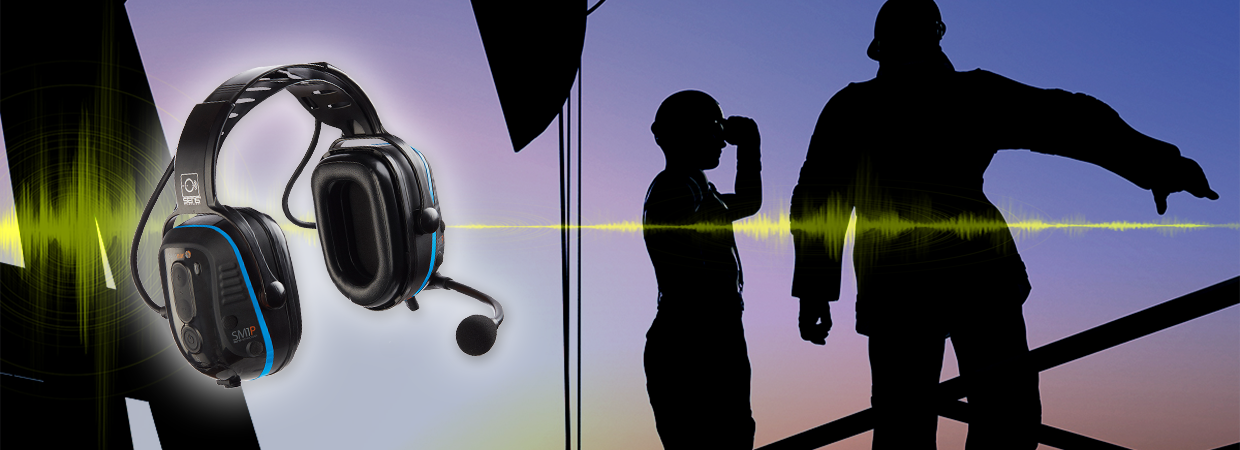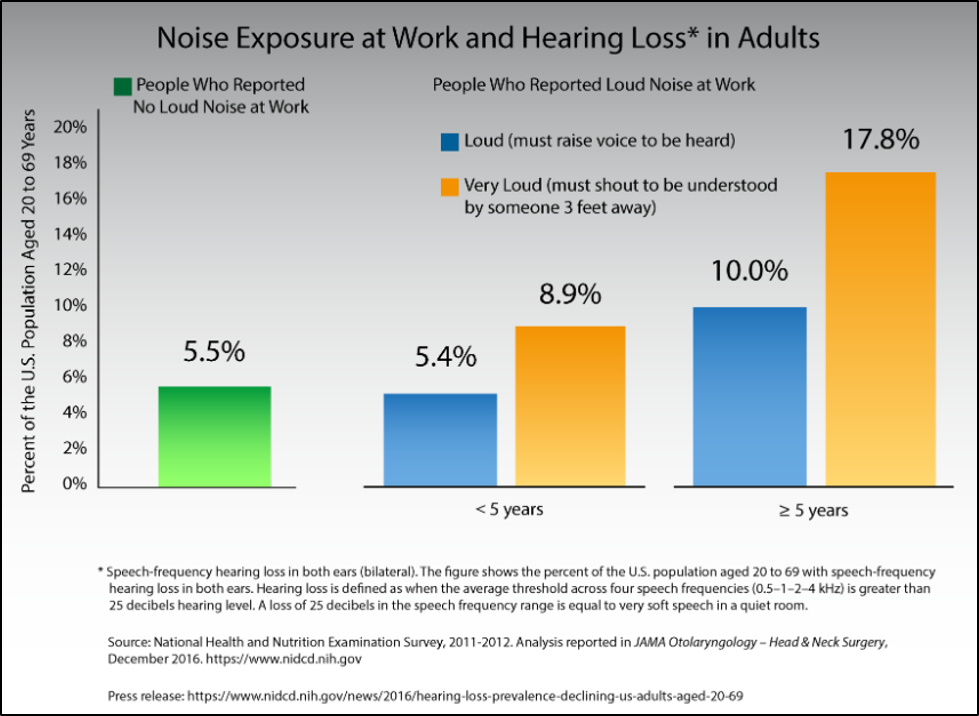- Home
- Blog
- Noise-Induced Hearing Loss
- Hearing Loss is Much More Common than Most People Realize

Hearing Loss is Much More Common than Most People Realize
Hearing loss is typically a gradual loss and is not identified until it noticeably affects people’s ability to hear/communicate and is, therefore, more prevalent than most people realize. Hearing loss can be caused by several factors including illness, age, and noise-induced hearing loss. Age and noise-induced hearing loss are the most common causes of hearing loss among adults.
What causes Noise-Induced Hearing Loss?
Hearing loss can result from damage to structures and/or nerve fibers in the inner ear that responds to sound. This type of hearing loss, termed (NIHL) or “noise-induced hearing loss,” is usually caused by exposure to excessively loud sounds and cannot be medically or surgically corrected. Noise-induced hearing loss can result from a one-time exposure to a very loud sound blast, or impulse, or from listening to loud sounds over an extended period. 1
A person with NIHL may find it hard to understand speech in noisy environments, such as restaurants. Although there is no gold standard for measuring hearing loss from noise, NIHL is suggested by hearing loss in selected high frequencies (3, 4, and 6 kHz), with better hearing at lower frequencies, such as 500 and 1000 Hz, and at the higher frequency of 8 kHz. The results of a hearing test appear as a dip on an audiogram (a chart that shows how well a person can hear), which researchers refer to as an audiometric notch, or the ‘noise’ notch. 2
Hearing loss statistics
- Approximately 15% of American adults (37.5 million) aged 18 and over report some trouble hearing. 3
- Among adults aged 20-69, the overall annual prevalence of hearing loss dropped slightly from 16% (28.0 million) in the 1999-2004 period to 14% (27.7 million) in the 2011–2012 period. 3
- An estimated 12.5% of children and adolescents aged 6–19 years (approximately 5.2 million) and 17% of adults aged 20–69 years (approximately 26 million) have suffered permanent damage to their hearing from excessive exposure to noise. 1
- A new analysis from a nationally representative health interview and examination survey found that nearly one in four (24%) of U.S. adults aged 20-69 years has features of his or her hearing test in one or both ears that suggest noise-induced hearing loss (NIHL). 2
- About 18% of adults aged 20-69 have speech-frequency hearing loss in both ears from among those who report 5 or more years of exposure to very loud noise at work, as compared to 5.5% of adults with speech-frequency hearing loss in both ears who report no occupational noise exposure. 3
- One in eight people in the United States (13%, or 30 million) aged 12 years or older has hearing loss in both ears, based on standard hearing examinations. 3
- About 2 percent of adults aged 45 to 54 have disabling hearing loss. The rate increases to 8.5% for adults aged 55-64. Nearly 25% of those aged 65-74 and 50% of those who are 75 and older have disabling hearing loss. 3
Noise Exposure at Work and Hearing Loss in Adults

Percent of the U.S. population aged 20-69 with hearing loss > 25 dB(A), by occupational noise exposure.
Financial Impact of Hearing Loss
- According to a survey by the Better Hearing Institute, hearing loss negatively impacts household income on an average of up to $12,000 per year. The use of hearing aids mitigates that loss by as much as 50%. 4
- The impact of hearing loss is estimated to be more than $100 billion annually. 4
- In a 15% tax bracket, the total cost to society in unrealized taxes is estimated to be more than $18 billion. 4
Preventing Noise-Induced Hearing Loss
Hearing loss caused by excessive exposure to loud sound is preventable. To reduce the risk of noise-induced hearing loss, the following is recommended:
- Understand the impacts and dangers of noise-induced hearing loss, as it can lead to communication difficulties, learning difficulties, distorted or muffled hearing, pain or ringing in the ears (tinnitus), and an inability to hear some environmental sounds and warning signals
- Identify and reduce exposure to the sources of loud sounds in your environment that can contribute to hearing loss (such as gas-powered equipment, heavy industrial equipment, power tools, gunfire, loud music, etc.)
- Adopt behaviors to protect hearing in your environment:
- Avoid or limit exposure to loud sounds
- Move away from sources of loud sounds when possible
- When it is not feasible to avoid exposure to loud sounds, be sure to use approved hearing protection devices (Earmuffs, headsets, earplugs, etc.) to reduce the sound level at the ear to a safe level (Use our hearing protection calculator to guide you in choosing the appropriate level of hearing protection - Click HERE)
- Turn down the volume to a safe level when listening to music or during a conversation on communication devices (Two-way radios, cellphones, etc.)
- Schedule a hearing evaluation by a licensed audiologist or other qualified professional, especially if there is concern about potential hearing loss
- Create a hearing conservation plan.
Sensear offers a full portfolio of hearing protection and communication headsets and earplug devices with 360° situational awareness and face-to-face communication capabilities so you never need to remove your hearing protection while in a high-noise environment.
Talk to a Sensear specialist today about your hearing protection and communication needs
References:- Preventing Noise-Induced Hearing Loss (Mar. 21, 2019) (https://www.cdc.gov/hearing-loss-children/about/preventing-noise-induced-hearing-loss.html?CDC_AAref_Val=https://www.cdc.gov/ncbddd/hearingloss/noise.html)
- U.S. adults aged 20 to 69 years show signs of noise-induced hearing loss (Feb. 7, 2017) (https://www.cdc.gov/hearing-loss-children/about/preventing-noise-induced-hearing-loss.html)
- Quick Statistics About Hearing (Dec. 15, 2016) (https://www.nidcd.nih.gov/health/statistics/quick-statistics-hearing)
- Healthy hearing (Nov. 30, 2019)(https://www.healthyhearing.com/report/52814-Hearing-loss-statistics-at-a-glance)







